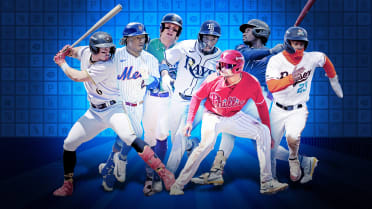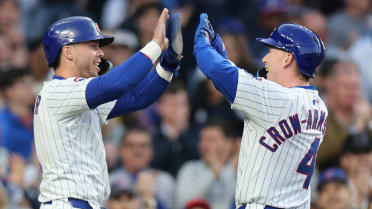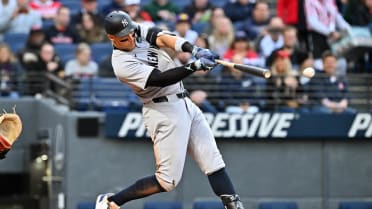This story was excerpted from Adam Berry’s Rays Beat newsletter. To read the full newsletter, click here. And subscribe to get it regularly in your inbox.
ST. PETERSBURG -- The Rays’ approach to the upcoming MLB Draft is a simple one: Be prepared for anything and everything.
“I said this last year, and I’ll say it every year until I’m done: I think the best philosophy is, don’t have one. That’s the beauty of picking later, where we are,” said amateur scouting director Chuck Ricci, who’s leading his second Draft with the Rays. “You write off a few players that you know are probably going to be gone, but you still do your homework on them, just in case. You’re open-minded to anything.
“We’re trying to get better, so we don’t have a specific profile in mind.”
Here’s a look at how the Draft is shaping up for the Rays.
When is it?
Day 1 of the Draft begins at 7 p.m. ET on Sunday, airing live on MLB Network, ESPN and MLB’s digital platforms.
Every pick on Monday (Day 2) and Tuesday (Day 3) can be seen starting at 2 p.m. ET on MLB.TV, MLB.com and the MLB app.
When are their first picks?
The Rays will have three picks on Day 1: 18th overall (Round 1), 58th (Round 2) and 66th (Competitive Balance Round B).
How much do they have to spend?
Tampa Bay’s bonus pool is $10,093,100, the 18th largest in the Majors. The assigned slot value of the club's first pick is $4,372,900. The 58th pick is valued at $1,525,200, and the 66th pick is valued at $1,260,200.
Day 1 speculation
Recent history might indicate Tampa Bay will gravitate toward a position player, but the club’s relatively late pick and flexible approach -- along with a tendency to appreciate some players more than the rest of the industry -- make it even more difficult to predict what the Rays will do.
“I think it’s a really good spot, because you don’t ignore the players that are supposed to go above you. You still do your homework on them, so you’re ready if one happens to fall,” Ricci said. “But your scope is probably bigger than everybody else’s -- which in the end is good, because it also gives you a better understanding of the strengths and weaknesses of each class.”
When in doubt, ask the experts. In this case, that means MLB Pipeline’s Jonathan Mayo and Jim Callis.
One name that has come up in multiple mock Drafts is Kentucky outfielder Ryan Waldschmidt (MLB Pipeline’s No. 23 Draft prospect). Waldschmidt, who was born in Sarasota, Fla., and went to high school in Bradenton, dealt with several injuries that held down his Draft stock. But since getting healthy, the right-handed-hitting left fielder has impressed with his on-field performance and under-the-hood metrics.
Callis also connected the Rays to Arizona high school lefty Cam Caminiti, the No. 15 Draft prospect, writing in a recent mock Draft that the Rays “wouldn’t let Caminiti get past them.” It seems possible, perhaps likely, that Caminiti could be off the board by then, however.
Thought to be one of the best players in the 2025 class, the athletic pitcher reclassified for this year to become one of the youngest players available, still 17 at the time of the Draft.
Other college players linked to the Rays include Oklahoma State outfielder(/pitcher) Carson Benge (No. 18), North Carolina outfielder Vance Honeycutt (No. 22), Tennessee second baseman Christian Moore (No. 13), Stanford catcher Malcolm Moore (No. 26) and, most interestingly, Mississippi State switch-pitcher Jurrangelo Cijntje (No. 25).
Trend watch
The Rays tend to gravitate toward players with at least one elite tool or skill, but as Ricci said, they work to avoid backing themselves into corners by limiting their scope to a certain type of prospect. They just want talent.
That said, they’ve done well recently leaning toward position players with their top pick. Infielder Brayden Taylor (2023) is quietly having a tremendous full-season debut. First baseman Xavier Isaac (2022) is flying up the Top 100 list. But he’s still got a ways to go to catch shortstop Carson Williams (2021), who is now a top 10 prospect in all of baseball.
But even those three had plenty of differences. Williams and Isaac were picked out of high school with immense upside and significant risk, while Taylor was a more polished college hitter with a well-rounded skill set. Williams plays a premium defensive position, whereas Taylor is more likely to land at second or third base and Isaac is strictly a first baseman.
Senior Reporter Adam Berry covers the Rays for MLB.com and covered the Pirates from 2015-21.




